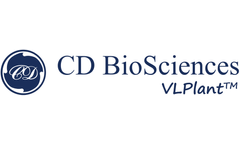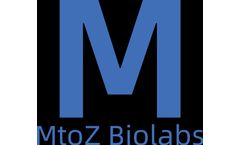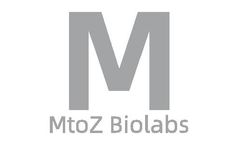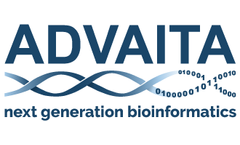Drug Antibody Testing Articles & Analysis: Older
35 articles found
When we look at the awe-inspiring architecture of life at the cellular level, one of the most intriguing and essential features is the cytoskeleton. This dynamic network of protein filaments provides structure, facilitates movement, and enables intracellular transport. Advances in technology have revolutionized our understanding of the cytoskeleton and have expanded the possibilities of ...
Drug antibody testing is a laboratory testing method specifically designed to evaluate the immune response of the human body to certain drugs. ...
Binding Activity Testing(1) Enzyme-Linked Immunosorbent Assay (ELISA)Uses the target antigen coated on microtiter plates to test the binding ability of the antibody drug.(2) Surface Plasmon Resonance (SPR)Can detect the binding between the antibody and the target molecule in real-time, and determine the rate ...
Introduction In the ever-evolving landscape of drug delivery systems, nanoformulation stands out as a revolutionary approach. Nanoformulation leverages nanotechnology to create drug delivery systems that can improve the efficacy, reduce side effects, and precisely target disease sites. This cutting-edge technology has garnered significant attention from researchers and pharmaceutical companies ...
Ongoing research and inventions in the field of oncology focus on the development of small molecule drug therapies for use in brain tumor resection. Small molecule drugs are being developed to target and effectively treat brain tumors to improve therapeutic outcomes. Small particles containing compounds that can enter cells and interact with specific targets to inhibit or modulate their ...
Immortalized cell lines and services are of ever-increasing importance in various aspects of biomedicine, toxicology and biotechnology. The cells can be used as model systems in phenotypic and drug screening, high content analysis, target identification, drug development, toxicology testing, gene editing studies, reporter assays. Besides, the immortalized cells have implications for the ...
One of the first steps in drug development and toxicity testing is creating cell models on which to evaluate the effects of chemical compounds on cellular, molecular and biochemical processes of interests. Stem cells or stem cell-derived downstream cells are the best choice to establish cell models to evaluate new compounds because they are patient-matched. Creative Bioarray provides customers ...
The backing layer is prepared with the same polymer solution as the needle tip, and polyvinyl alcohol is used as the backing film-forming material to support the microneedle fractions, so that the backing layer has a tight bond with the microneedle tip, and the backing film and the needle tip can be consistently detached from the mold when the film is uncovered, without the problem of process ...
Drug development is a complex and multifaceted process that involves extensive research and testing to ensure safety, efficacy and quality for human use. One critical element in the drug development process is drug metabolism and pharmacokinetics (DMPK), which refers to how a drug is absorbed, distributed, metabolized, and excreted (ADME) from the body. In vitro DMPK services, along with ...
Bio-ink is a revolutionary material that is rapidly changing the fields of medicine, tissue engineering, and even bioprinting food. This fascinating substance is essentially a type of ink made from living cells and other biocompatible materials that can be used to 3D print complex biological structures. What is Bio-Ink Made Of? The composition of bio-ink can vary depending on the desired ...
ByMatexcel
Creative Bioarray is offering cell immortalization service. Based on our experienced scientist team and elaborate technical platforms, we have been able to successfully immortalize cells from any species and any tissue with the function you need. Our custom immortalization service can significantly extend replicative capacity of your target cells, which saves your time and money over trying by ...
Drug development is a complex and multifaceted process that involves extensive research and testing to ensure safety, efficacy and quality for human use. One critical element in the drug development process is drug metabolism and pharmacokinetics (DMPK), which refers to how a drug is absorbed, distributed, metabolized, and excreted (ADME) from the body. In vitro DMPK services, along with ...
Pluripotent stem cells — cells with the ability to differentiate into nearly any cell type in the body, constituting a significant potential for regenerative medicine. Among these, induced Pluripotent Stem Cells (iPSCs), in particular, have garnered substantial interest from the scientific community due to their ability to be produced from adult cells, eliminating the ethical quandaries ...
Advantages of Single-Cell RNA Sequencing in Drug Discovery Single-Cell RNA Sequencing (scRNA-seq) offers several advantages in drug discovery, primarily through target identification. By analyzing complex tissues and diseases at the cellular level, scRNA-seq allows researchers to identify distinct cell subtypes and their gene expression profiles. This knowledge enhances our understanding of ...
In the fast-paced realm of drug discovery, scientists constantly seek innovative approaches to efficiently and cost-effectively identify potential drug candidates. Virtual screening, a breakthrough computational technique, is poised to transform the pharmaceutical industry. In this article, we delve into the world of virtual screening and explore its remarkable potential to revolutionize drug ...
My previous post, Pathway Analysis vs Gene Set Analysis, ended with an interesting question: has anybody really compared side-by-side gene set analysis methods and pathway analysis methods on the same data sets? Well, the answer is: not yet! The main reason for this is that it is extremely difficult to objectively validate the results of a pathway analysis method. It is even more difficult to ...
The ability to predict how a clinical trial participant will adhere to their treatment, and even respond to that treatment, has great promise to advance patient-centric clinical research. But, as we look to understand the impact a drug has on patients’ everyday health outside of a research environment, what happens to these unique, predictive findings around dosing and outcomes once a drug ...
ByAiCure
Drug analysis refers to the detection and analysis of ingredients and contents in drugs. Drug analysis and testing involves the study of composition, physical and chemical properties, purity, and the determination of the content of active pharmaceutical ingredients and their preparations, to ensure that the medications are safe, rational, and effective. Drug analysis and testing are very ...
Revisiting the “why” behind decision making can be a helpful exercise in all aspects of business. This is no less true for clinical operations executives when it comes to the clinical trial systems they employ to facilitate their teams’ work. The technology that supports clinical trial systems has evolved steadily over the past several decades, yet the ultimate goal of ...
Benefits of forced degradation test The degradation pathway of the drug is closely related to the molecular structure of the drug. The ester group or amide bond in the molecular structure may be hydrolyzed under acid-base catalysis conditions. Provide support for drug safety. When toxicologically relevant impurities are not readily available, toxicological evaluation of samples degraded to a ...












